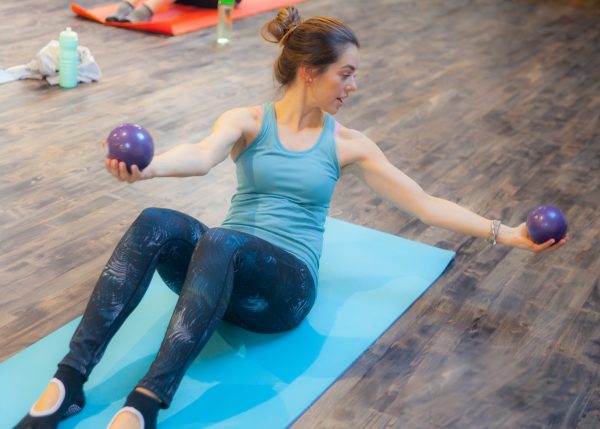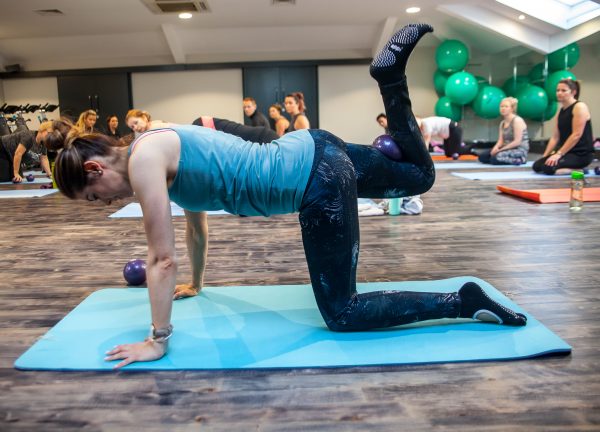Strength training has become a huge part of life for many people, from the gym junkie, those who just like to keep fit, those rehabilitating injury, those combating mental health, and those using it as an adjunct to their sport. Lifting weights ticks all of these boxes and more, but incorporating pilates in to your weekly schedule as well can further enhance your outcome.
Now you’re probably thinking you don’t have time to add another element in to your exercise regime! Keep reading to find out why it’s SO important to do so, and I will show you HOW to do this and get started today!
Why do we strength train in the first place?
Strength training simply keeps our bodies strong! Over time our bodies will weaken, whether this is due to underusing muscles, poor postures, bad habits, compensations etc but they do decline! The saying “use it or loose it” it completely relevant in that if we are not using muscles regularly they will become less activated and less efficient at working. This can eventually lead to aches and pains where muscles in one area are working overtime (due to prolonged poor posture for example), or if you have an injury (like a sore back) then your back and hip muscles may work harder to reduce the strain on the injured region.

Increasing your strength training by just 10% (through body weight exercises or lifting weights) can reduce the risk of injury significantly (1). This applies to both acute injuries and those more chronic.
Pilates and the prevention of these injuries:
Acute injuries:
The practise of pilates exercises immediately recruits the core muscles, and creates efficiency and coordination in various muscle groups. This causes a carry over effect of increased coordination, and an enhanced technique whilst training. Surrounding tissues are strengthened and therefore minimises the critical joint load (the load at which the joint will finally suffer). Collectively, this provides an improved psychological perspective of high risk situations and the person, and the muscles can respond more rapidly and effectively; therefore acute injury is minimised (1).
Chronic injuries:
The on-going practise of pilates will pre-condition the tissues to a variety of exercises and loads. Gradually increasing the exercise load will increase the remodelling capacity and vascularisation of the tissues- meaning their ability to adapt and change is improved (1). This makes them a lower risk to injury because of their ability to respond to different challenges, so when injury potentially occurs, they are already able to cope with it better.
How does pilates help our strength training?
Our main compound exercises (olympic lifts/power lifts etc), are generally all linear movements. This means they involve working in one direction e.g. squats, bench press, and clean & press all involve moving the bar up and down, no twisting or turning involved. This certainly develops strength and power within this movement pattern, but implies deviation from this would not have the same strength gains and may even have a reduction in stability.
Pilates exercises teach us to move from our central core region. This means that every movement is initiated with core activation first, providing a stable base and centre from which to move from. Think of this as a large crane having the truck part fixed still and the crane arm able to then move far away from the truck without it toppling over.
Insufficient strength in your core muscles has been identified as an important risk factor for groin injuries and other muscle strains (1). This is on the basis that the weak core muscles cause a poor biomechanical translation of loads through the body, as the core cannot sustain or distribute the loads applied.

Pilates exercises then activate our deeper muscles, the smaller ones that stabilise our joints. These exercises can be very muscle group specific therefore allowing greater recruitment of these small, deep muscles. This provides extra stability to our joints and allows the bigger, superficial muscles to then work efficiently through your more global strength work.
By activating these deeper muscles around the joints it creates joint stability, and also balance. Improved balance can only be a good thing when you are trying to lift heavier loads!
Finally, by achieving the core activation and muscle isolation, combined with the pilates breathing and concentration you will develop a greater focus. Focusing the mind on the movement provides better exercise execution overall.
How do i get started?
- Learn how to engage your core correctly. This is the activation of the lower abdominal region, between the hip bones (and pelvic floor if able). It consists of approximately a 30% muscle contraction. This should be sustained for the duration of your exercises eventually.
- Begin with basic core/pilates exercises such as these here and here.
- Progress to add in movements with the arms and legs to further challenge the core, and introduce strength work to other muscle groups.
- Change position; try these on all fours (pic below), on your side, standing, or kneeling. This will provide variation and create increased adaptability for your body.
- Continue to progress your workouts by moving on to these core exercises and these kinds of exercises.

Reference:
- Br J Sports Med 2018;52:1557–1563. doi:10.1136/bjsports-2018-099078




